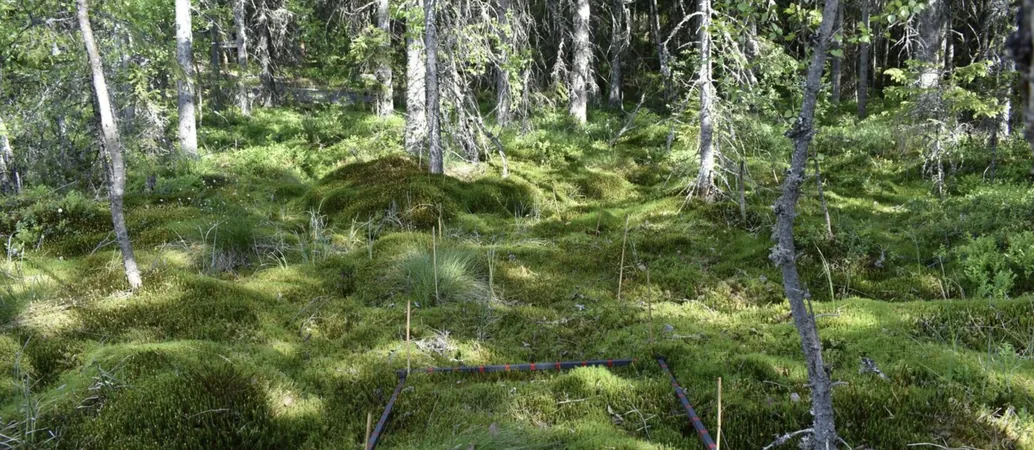
Game-Changer for the Environment: Satellite Insights Reveal the Power of Peatland Restoration!
2025-07-09
Author: Yu
Revolutionary Study Highlights Restoration Benefits of Peatlands
An exciting breakthrough in environmental research has emerged from an international team spearheaded by Aalto University! They’ve unveiled the first extensive analysis, leveraging over two decades of satellite data, showcasing how peatland restoration can create remarkable positive changes.
This groundbreaking research, published in the esteemed *Environmental Research Letters*, focuses on evaluating critical climate factors—temperature, vegetation, and albedo—essentially how much sunlight the peatland surface reflects into the atmosphere.
Decade of Transformation: Results You Can't Ignore!
The findings are nothing short of fascinating: approximately ten years post-restoration, the albedo and temperature in revitalized peatlands began to closely mirror that of healthy, intact ecosystems rather than their drained counterparts. According to Iuliia Burdun, the study’s lead author and a Postdoctoral Researcher at Aalto University, this signals a significant transformation in the landscape.
The research surveyed 72 sites across Finland, Estonia, Latvia, Lithuania, the UK, Canada, and the USA, where peatlands comprise a substantial part of the territory. From wooded areas to those devastated by peat extraction and drained for agriculture, the results paint a vivid picture of what restoration can achieve.
Vegetation: A Slow but Steady Revival!
While albedo and temperature changes manifested swiftly, the revival of vegetation was less immediate and varied. Burdun explains that while simply blocking drainage ditches does initiate recovery, it often requires additional interventions for full restoration—like managing tree populations in forested mires or introducing moss in degraded extraction zones.
The Crucial Role of Peatlands in Climate Change
Peatlands, when drained, dry out and release the carbon they store, contributing to around 5% of the world's greenhouse gas emissions. In stark contrast, undrained peatlands function as vital carbon sinks and biodiverse habitats. With Finland and others committing to large-scale restoration efforts, bolstered by the EU Restoration Regulation, the future of these ecosystems looks hopeful.
In Finland, peatlands make up about one-third of the land area, yet half have been drained. The path to restoration is significant and costly, emphasizing the necessity for effective monitoring strategies, as highlighted by Professor Miina Rautiainen, the study’s leader. Field measurements alone won't suffice—satellite technology is paving the way for understanding the impacts and successes of these vital environmental efforts.
 Brasil (PT)
Brasil (PT)
 Canada (EN)
Canada (EN)
 Chile (ES)
Chile (ES)
 Česko (CS)
Česko (CS)
 대한민국 (KO)
대한민국 (KO)
 España (ES)
España (ES)
 France (FR)
France (FR)
 Hong Kong (EN)
Hong Kong (EN)
 Italia (IT)
Italia (IT)
 日本 (JA)
日本 (JA)
 Magyarország (HU)
Magyarország (HU)
 Norge (NO)
Norge (NO)
 Polska (PL)
Polska (PL)
 Schweiz (DE)
Schweiz (DE)
 Singapore (EN)
Singapore (EN)
 Sverige (SV)
Sverige (SV)
 Suomi (FI)
Suomi (FI)
 Türkiye (TR)
Türkiye (TR)
 الإمارات العربية المتحدة (AR)
الإمارات العربية المتحدة (AR)